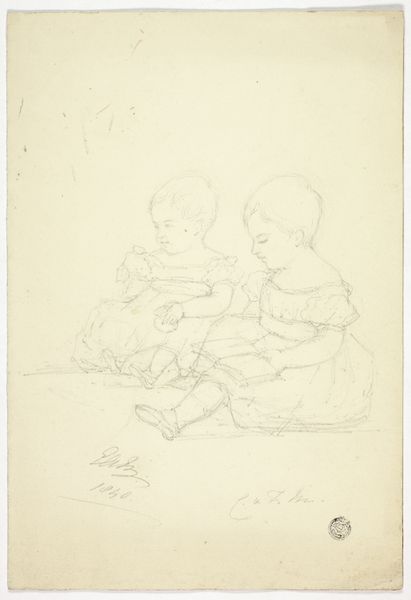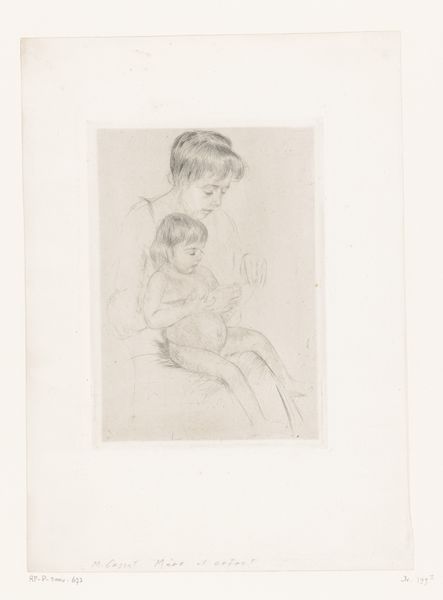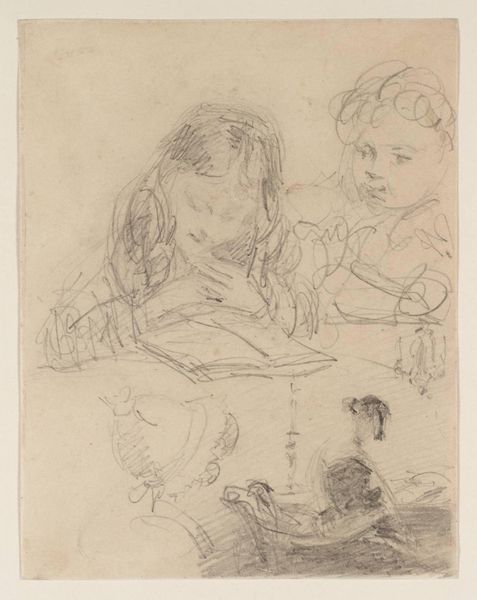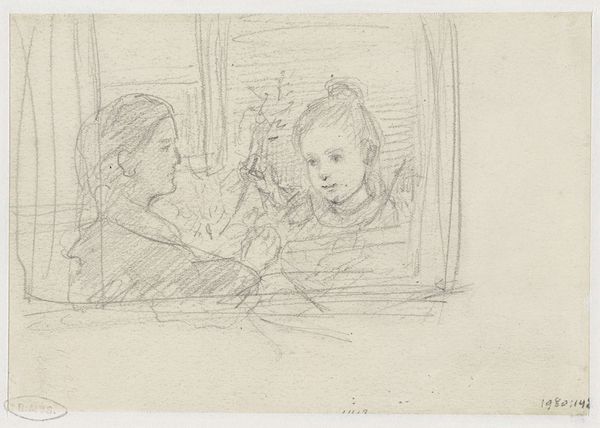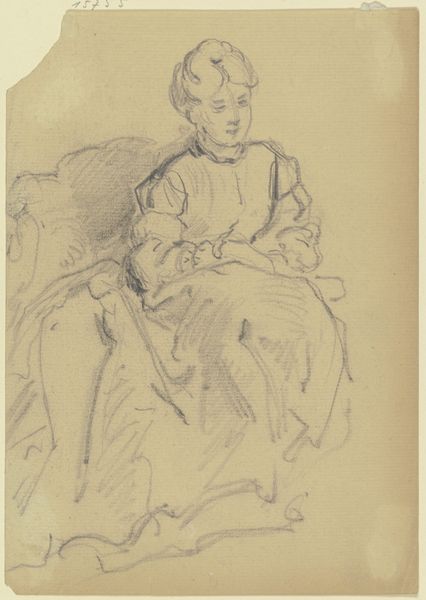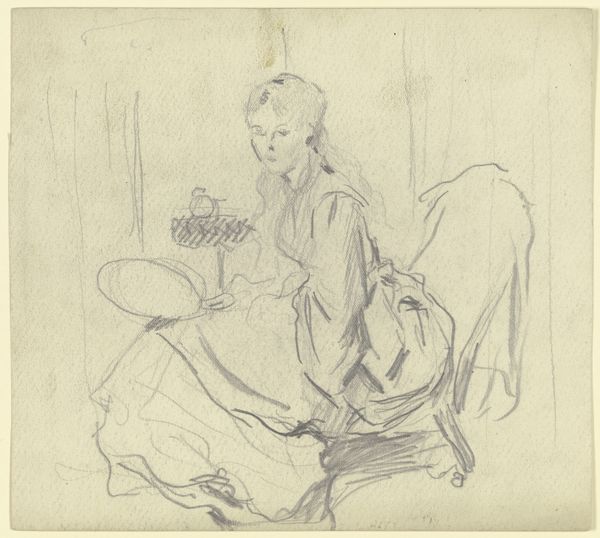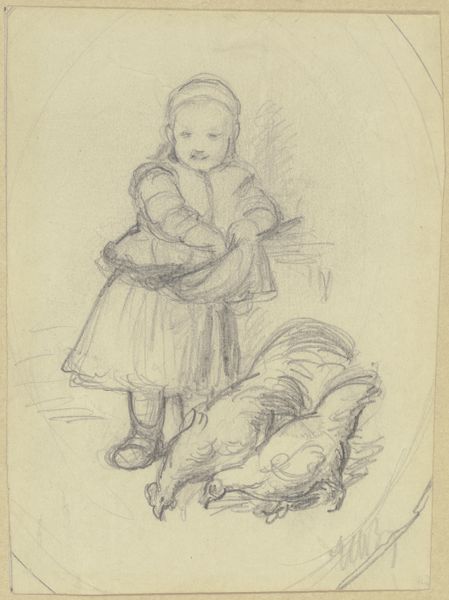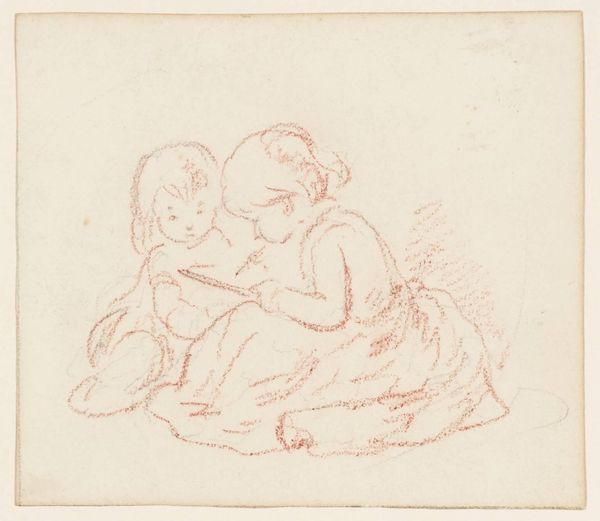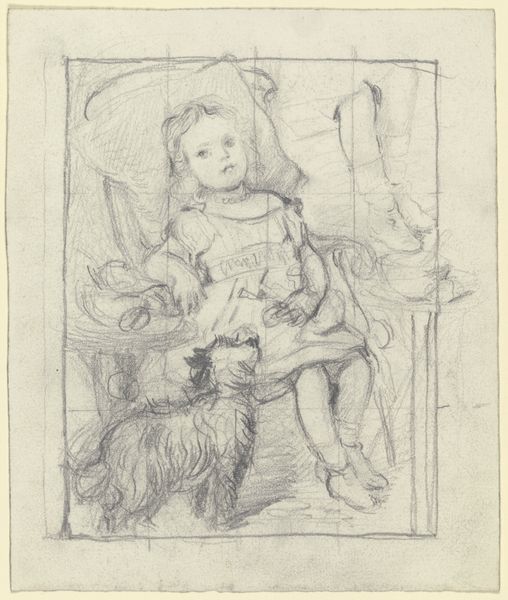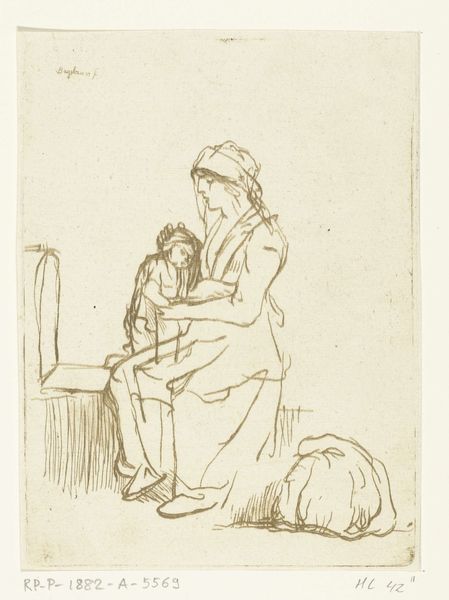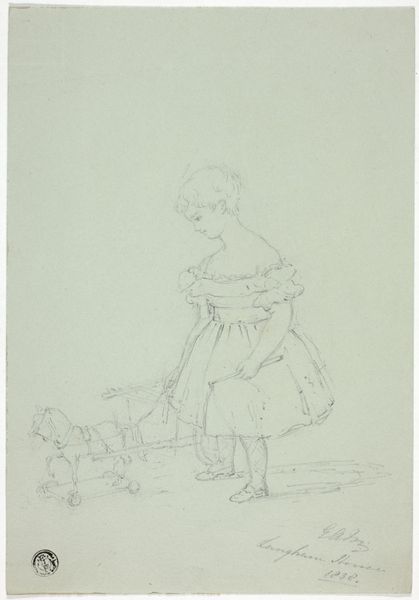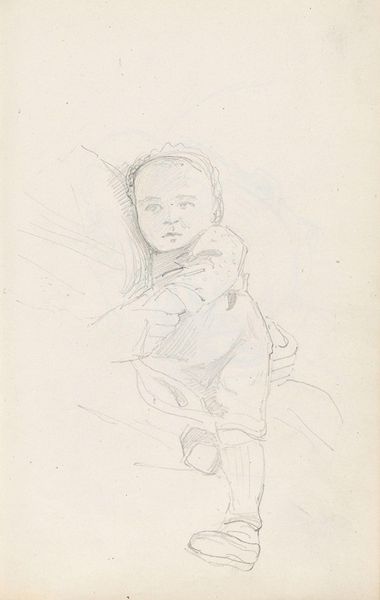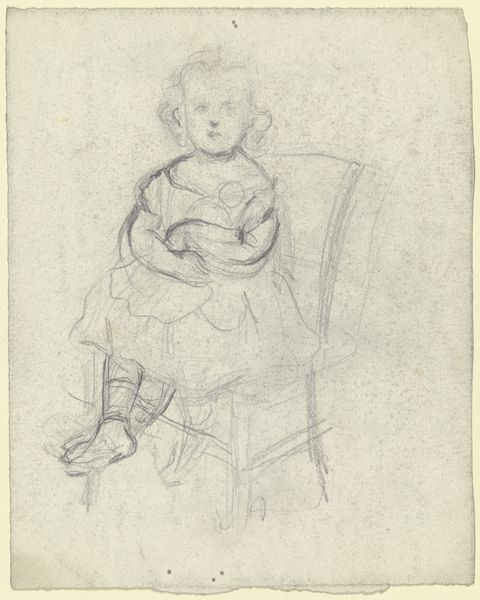
drawing, pencil
#
portrait
#
17_20th-century
#
drawing
#
imaginative character sketch
#
light pencil work
#
pencil sketch
#
german-expressionism
#
personal sketchbook
#
german
#
idea generation sketch
#
ink drawing experimentation
#
group-portraits
#
pencil
#
sketchbook drawing
#
pencil work
#
storyboard and sketchbook work
#
sketchbook art
Copyright: Public Domain
Curator: This intriguing drawing, known as "Two Children," is currently held in the Städel Museum's collection. Executed in pencil, it gives us a peek into the artist Jacob Happ's process. Editor: My immediate thought is one of fragility. It’s so light, so tentative—almost as if the children might vanish if you stare too hard. Like a half-remembered dream of childhood itself. Curator: It’s the economy of the line, isn't it? Happ uses the pencil medium to really bring attention to its graphic capabilities. This makes it read as though it came from a sketchbook – something incredibly personal that may have been utilized for a bigger, more refined work. Editor: Yes, and notice how the older child’s gaze meets yours, but the younger one seems lost in her own little universe. There’s a quiet contrast there that intrigues me, especially coupled with the seemingly spontaneous sketch style. I can't help but wonder if the choice to make this personal reflection, this private moment, somehow elevated children from being simply tiny adults or decorative familial assets within portraiture. Curator: Considering that this came about within German Expressionism’s orbit – and that, stylistically, many see this as sketchbook art or work produced to inform larger works – one can argue that the context for artistic production also widened during this period. Many artworks took their material cues from life; or rather, elevated daily, unrefined techniques in production as valid or valuable avenues. Editor: Perhaps. Although I still feel this intimacy comes through so very strongly. There’s a universal quality to the scene that resonates. We see vulnerability, childhood in its purest state—free from the artificial trappings that a commissioned portrait might entail. I feel almost as though I’m intruding on a tender moment, a secret shared between sisters or siblings. Curator: I agree there is tenderness – and I find your take deeply personal! To wrap up, this drawing prompts us to reconsider our assumptions about materiality. And it also raises questions about the role of production within the traditional German Expressionist period and this artwork’s ties to those processes and developments. Editor: Absolutely. It makes you think, doesn’t it? Art has such power!
Comments
No comments
Be the first to comment and join the conversation on the ultimate creative platform.
